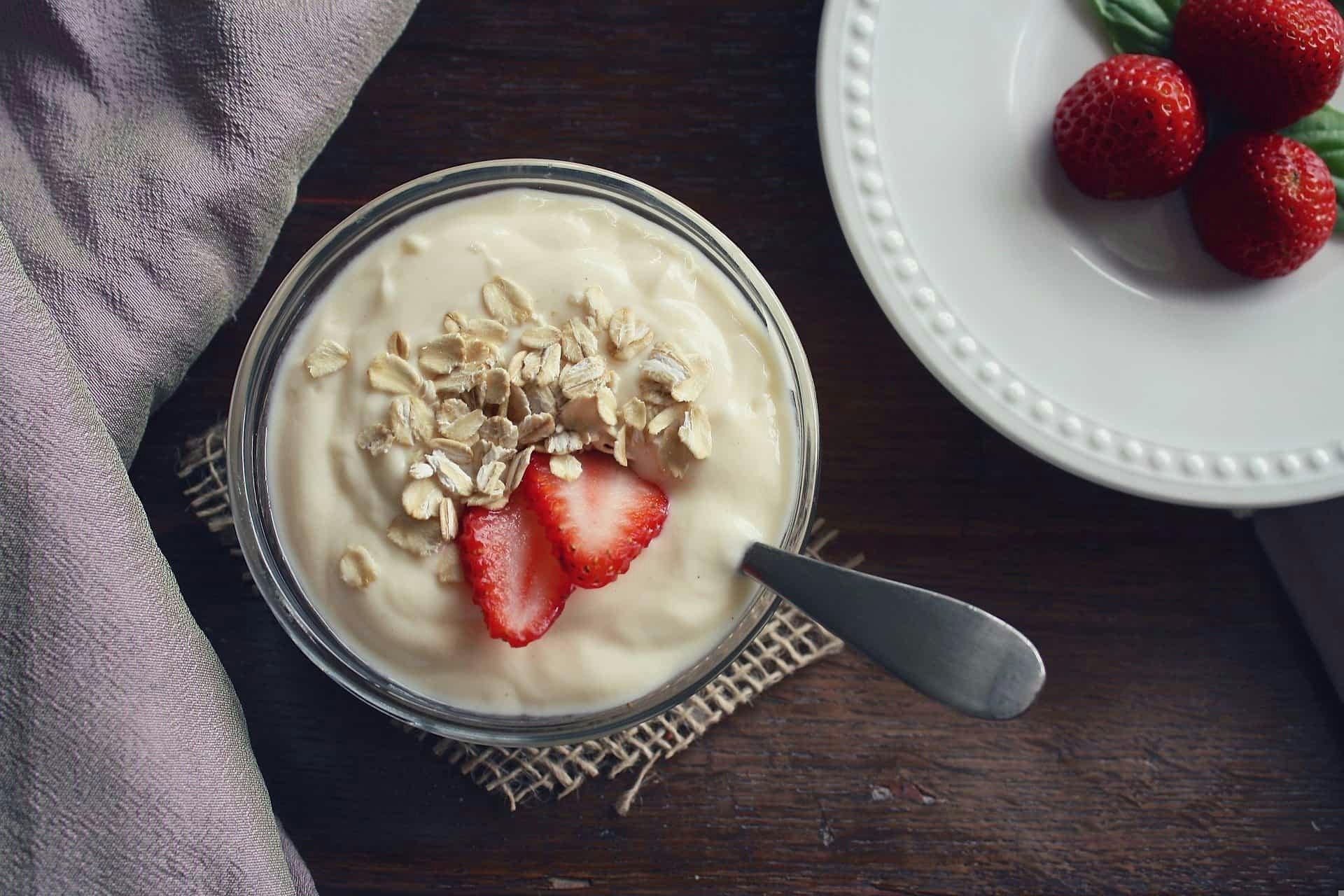


Find foods you can eat.
Introduction to Lactose Free Diets
Published on December 16, 2022What is a lactose-free diet?
A lactose-free diet restricts dietary sources of lactose, a sugar found in milk and dairy products. A lactose-free diet differs from a dairy-free diet in that someone who is avoiding lactose may still consume lactose-free dairy products.
Who should follow a lactose-free diet?
Those with lactose intolerance benefit from following a lactose-free (or low-lactose) diet. Those with lactose intolerance do not produce enough of the enzyme lactase in their small intestine. Lactase breaks down lactose sugar.
Without lactase, lactose sugar makes its way to the large intestine intact. Here, gut bacteria break down the lactose sugar, producing gas and drawing fluid into the bowel. This can lead to uncomfortable gastrointestinal symptoms such as:
- Gas
- Bloating
- Nausea
- Diarrhea
- Abdominal cramping
“Lactase non-persistence” is the most common cause of lactose intolerance. In this condition, individuals produce less of the lactase enzyme as they get older. “Congenital lactase deficiency” is a less common reason for lactose intolerance. In this condition, individuals do not produce sufficient lactase from birth.
Additionally, some may develop temporary lactose intolerance often referred to as “secondary lactase deficiency.” This may occur after a bout of food poisoning, small intestinal bacterial overgrowth (SIBO), or an insult to the small intestine such as surgery, radiation therapy, chemotherapy-induced intestinal inflammation, certain medications, or inflammatory illnesses such as Crohn’s disease or Celiac disease. In these cases, lactose intolerance may resolve once the small intestine heals and is able to produce sufficient lactase again.
If you have lactose intolerance, you are certainly not alone. Current estimates suggest that 68% of the world’s population has lactose intolerance. The condition is even more common among those of African, Asian, or Hispanic descent.
How do I know if I’m lactose intolerant?
Lactose intolerance can be diagnosed with a few methods including:
- Lactose elimination diet: with this approach, lactose is avoided for a period of time. If the individual’s symptoms improve, it is likely that they have lactose intolerance. If a lactose elimination diet is carried out under the supervision of a registered dietitian or physician, you may be asked to keep a detailed food and gastrointestinal symptom journal to best interpret your response. If your symptoms resolve or improve after eliminating lactose for a period of time, you may be asked to drink a lactose-containing solution under medical supervision to confirm your response. If symptoms return after drinking the solution, lactose intolerance is confirmed.
- Lactose tolerance test: for a lactose tolerance test, an individual drinks a lactose-containing solution under medical supervision. The individual’s blood sugar levels are tested at regular intervals over the course of 2 hours. If their blood sugar does not rise significantly throughout the testing period, this indicates they were unable to break down and absorb the lactose. Therefore, lactose intolerance is indicated.
- Hydrogen breath test: for this approach, the individual drinks a lactose-containing solution under medical supervision and blows into a device that measures the amount of hydrogen gas in their breath at regular intervals. High levels of hydrogen gas in the breath may indicate the individual is not properly breaking down lactose. Instead, their gut bacteria are breaking down the lactose and producing hydrogen gas as a byproduct.
What foods are lactose free?
A lactose-free diet may include the following:
- Fruits and vegetables
- Beans and legumes
- Nuts and seeds
- Lactose-free dairy products, such as lactose-free milk and yogurt
- Dairy alternatives, such as almond milk and soy milk
- Eggs
- Grains
- Fish and shellfish
- Meat and poultry
Depending on your level of lactose tolerance, you may be able to tolerate small quantities of dairy products that are low in lactose. These include hard aged cheeses like parmesan, cheddar, and Swiss, as well as Greek yogurt, kefir, butter, and foods containing whey protein isolate. Alternatively, you may be able to tolerate lactose-containing dairy products if you take lactase pills with these foods.
You can find thousands of foods without lactose on the Fig app!
Foods for lactose intolerant to avoid
If you are strictly adhering to a lactose-free diet, the following foods are avoided:
- All mammalian milk including cow’s milk, goat’s milk, sheep’s milk, and buffalo milk
- Cheeses, especially soft cheeses, such as cottage cheese, ricotta cheese, cream cheese, brie, and camembert
- Yogurt
- Pudding
- Ice cream, gelato, frozen yogurt, and sherbet
- Butter
- Buttermilk
- Cream, including sour cream, whipped cream, heavy cream, and half and half
You can find a full list of foods to avoid with lactose intolerance in the Fig app.
Helpful tips when starting a lactose-free diet
When dining out, inform your server that you are lactose-intolerant and ask how foods are prepared. Bringing lactase pills with you can also help to mitigate potential GI symptoms if you choose to consume some lactose-containing foods.
Be sure to check ingredient labels when grocery shopping to help you avoid sneaky sources of lactose. The Fig app does this for you, helping you to identify lactose-free foods with ease!
What foods are lactose?
When grocery shopping, foods that commonly contain hidden sources of lactose include but are not limited to:
- Some frozen meals
- Cream sauces
- Cream or milk-based soups and sauces
- Creamy salad dressings
- Baked goods and baking mixes
- Milk chocolate and white chocolate
- Whey-based protein powders, especially those made with whey concentrate
- Protein shakes containing whey or other lactose-containing dairy products
- Blended coffee drinks and instant coffee mixes
- Coffee creamer
- Processed meats, such as hot dogs, deli meats, and sausage
- Flavored chips and other snack foods
- Instant potato mixes
Things to look out for on a lactose-free diet
While following a lactose-free diet generally involves little nutritional risk, if you do not consume any dairy products (including those that are lactose-free), there are a few nutritional considerations to keep in mind:
Calcium
The body needs calcium for bone health, muscle contraction, nerve transmission, and blood clotting. Since dairy products are notoriously rich sources of calcium, it’s important to include plenty of other calcium-rich foods in your diet. If you regularly consume lactose-free dairy products, this is less of a concern.
If you opt to limit or eliminate all forms of dairy, there are many other calcium-rich foods you can include in your diet such as:
- Dark green leafy vegetables, especially those in the cruciferous family (such as kale, broccoli, collard greens, bok choy, and mustard greens)
- Certain nuts and seeds and nut and seed butters, especially almonds, almond butter, tahini, and chia seeds
- Calcium-fortified dairy alternatives
- Tofu made with calcium sulfate
- Canned fish eaten with bones, such as canned salmon and sardines
For more ways to incorporate non-dairy sources of calcium into your diet, check out our blog post on the topic, found here.
Vitamin D
Vitamin D plays a number of important roles in the body. These roles include supporting proper immune function, facilitating calcium absorption, promoting stable mood, and much more. Most cow’s milk is fortified with vitamin D in the US, but many dairy alternatives are not fortified.
That said, while vitamin D-rich foods can help you maintain adequate vitamin D levels, our body’s main way of obtaining vitamin D is by synthesizing it. We synthesize vitamin D when the sun’s UV rays strike our skin. Depending on where you live, certain genetic factors, and how much time you typically spend outdoors in sunlight, it may be challenging to get enough vitamin D.
To find out where you stand, check your vitamin D levels regularly. If they’re low, speak with your physician or registered dietitian about potential supplementation. Additionally, a few lactose-free foods also contain some vitamin D including:
- Egg yolks
- Fatty fish such as salmon, sardines, tuna, mackerel, cod, and herring
- Fortified lactose-free dairy products
- Fortified dairy alternatives
- Fortified cereals
Who is a lactose-free diet not for?
For most, following a lactose-free diet poses little nutritional risk, especially if you consume a varied, well-balanced diet rich in lactose-free calcium sources.
However, those with a dairy allergy should not follow a lactose-free diet but rather an entirely dairy-free diet. People with a dairy allergy should exclude lactose-free dairy products and foods or ingredients derived from dairy. This is because food allergies are immune reactions to proteins in food. Eliminating lactose from a dairy product will not remove its allergenic milk proteins. Similarly, those with a milk protein intolerance should follow a dairy-free or dairy-restricted diet rather than a lactose-free diet.
Additionally, an entirely lactose-free diet may not be necessary for those with milder forms of lactose intolerance. Every individual’s lactose tolerance level varies depending on the amount of lactase enzyme they produce. Some individuals produce none, whereas others produce enough to tolerate low-lactose foods. These include parmesan cheese or even small portions of higher-lactose foods like milk. Working with a registered dietitian can help you determine your threshold for lactose tolerance and find out the extent to which you may be able to liberalize your diet without experiencing symptoms.
Is lactose free milk dairy free?
Lactose free milk is not dairy free. Even though lactose free milk contains lactase to break down the lactose, it still comes from dairy sources such as cows. Therefore, lactose free milk is still considered a dairy product.
Lactose free meaning
Dairy products contain a sugar called lactose. Therefore, lactose free refers to foods without lactose. These foods include non-dairy products like grains, legumes, fruits and vegetables. They also include dairy products with lactase, the enzyme that breaks down lactose.
Quickly find lactose free foods with the Fig app or check if products are likely lactose free online.
 Alpha-Gal Allergy
Alpha-Gal Allergy Elimination Diet
Elimination Diet